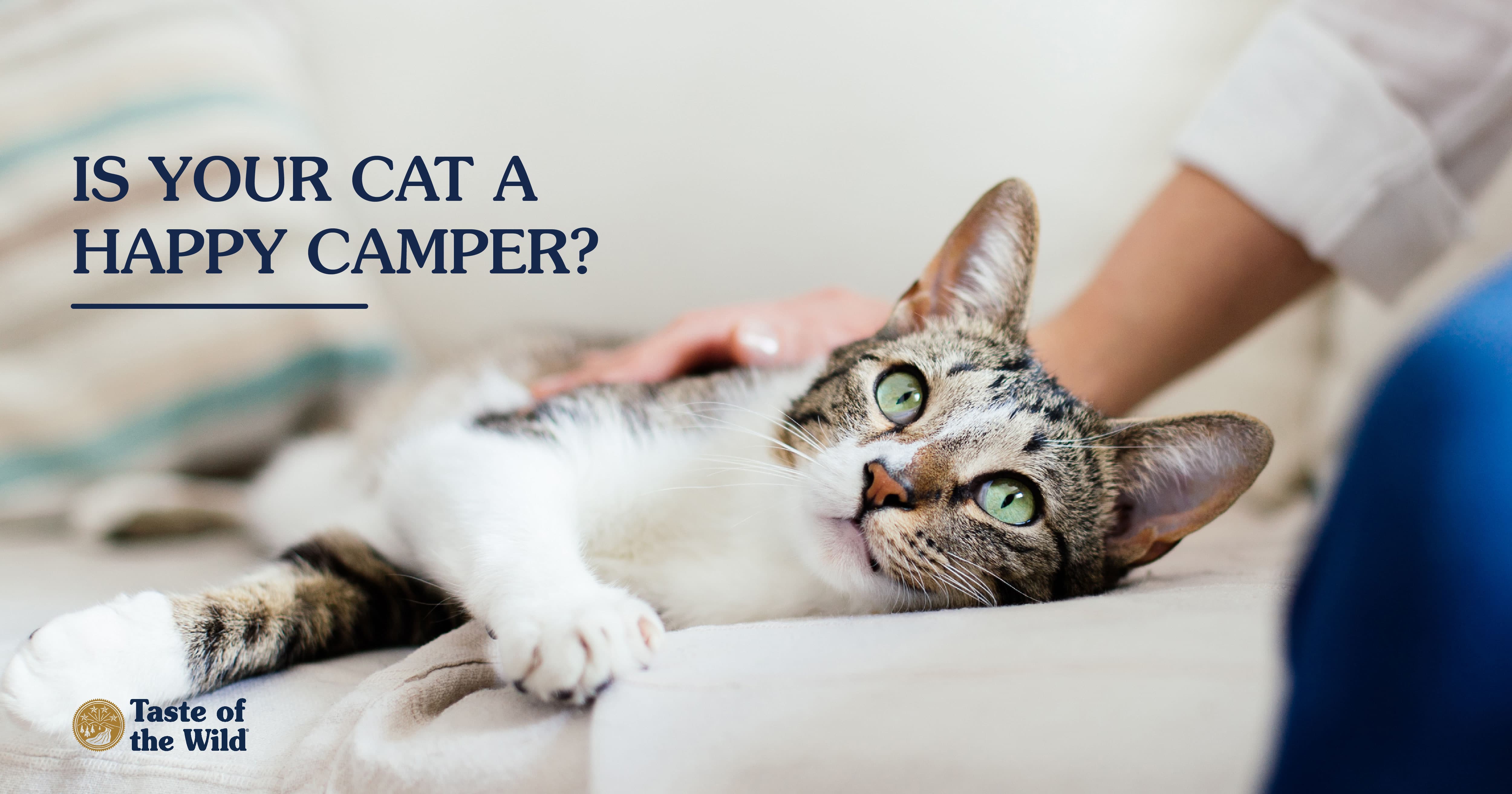
By now you’ve probably seen the trending videos of doggos bouncing to “I’m a happy guy, just a happy, happy guy.” But what about the cats of the world? Are they bouncing happily about, too?
If you’ve ever owned a cat, you’ll know it’s likely that they are not bouncing around like a bunch of happy dogs. But just because they’re not bouncing around doesn’t mean they’re not gleeful. Cats in general are simply more curious… and restrained.
Cats exhibit happiness in different ways. Knowing what signs to look for in your cat can help you see just how purrfectly satisfied your cat has been this entire time.
Good Grooming Habits
A content cat will groom themselves frequently and often in front of you. The next time they plop down in the middle of the room and hike up a leg for an impromptu bath, remember it’s their way of saying, “Hello, I’m doing great!”
If your cat begins to show signs of an unkept coat, it could be a heads-up that they’re not feeling well. We recommend giving your local vet a call as soon as regular grooming is no longer a top priority for your feline.
Happy Cat Acoustics
Cats can make nearly 100 different vocalizations. Feline noises associated with positive body language — tail up, rubbing up against you, etc. — are a great sign. It’s their way of communicating their level of happiness. For example, if you’re rubbing their belly and your cat is purring away, they’re saying, “Loving this! Keep it up, hooman!”
Now you may notice that some cats are more vocal than others. That doesn’t necessarily mean they’re significantly more content. Like humans, some cats just like to communicate more.
Making Biscuits
We all know how adorable it is when cats knead or “make biscuits” with bedding or your lap. But did you know this is also a sign that your furry companion is feeling safe and loved? It’s true! This motion is instinctive behavior felines begin exhibiting after they’re born.
Kneading can also mean they’re marking their territory. According to veterinarians, cats produce a substance called “interdigital semiochemical” between their toes. When the cat makes biscuits and flexes their toes, this chemical is released to label you or that spot as safe territory.
Tails Up
As you bond with your cat, start observing their day-to-day postures and evaluate what they’re responding positively or negatively to. A cat’s body language can say a lot about how they’re feeling.
If they’re scrunched down, wiggling their behind and have dilated eyes, they’re ready to pounce and play. If they’re stretched out and lounging in front of you, they’re relaxed. Or if they’re walking with their tail up with a little curve at the end, they’re happy as a lark.
Greeting Their Human
Being a cat owner, walking in the door from a trip to the grocery store usually means you’re greeted with a cat by your feet. To you, it’s a game of don’t trip over the cat and drop the eggs. But to Mittens, it’s their way of saying, “Welcome home! I’m ecstatic you’ve returned.” Happy cats will lift their head, meow, rub up against your leg or blink slowly whether you’re entering through the front door or walking in their direction.
Regular Litter Box Usage
Not only do you want your cat to use their litter box because it keeps your place cleaner, but it also signals that they’re doing okay, health-wise. And we all want our furry feline to be feeling well.
A sick or unhappy cat will try to communicate with their human that something is off by going to the bathroom near the box but not in it. If this is a persistent issue, make an appointment with your local veterinarian.
Eating and Sleeping Well
Gleeful cats will eat and sleep regularly, meaning they aren’t suddenly awake different hours of the day. What’s a normal amount of sleep for a cat? Typically between 12 to 16 hours a day depending on their age. Kittens and older cats can sleep up to 20 hours a day.
Happy, healthy cats typically don’t shun a healthy diet (as determined by pet food packaging and/or your veterinarian). But it’s good to remember that food intake is also based on age and life stage.
If you notice your cat’s sleep and eating habits are out of sorts, contact your veterinarian as this could also be another warning sign your pet is not feeling well.
After evaluating your cat’s level of happiness, how do you feel? If Mittens doesn’t seem like the most happy or content cat, get with your veterinarian and see what you can do to help!
RELATED POST: Enrichment Tips to Keep Your Indoor Cat Happy
The information in this blog has been developed with our veterinarian and is designed to help educate pet parents. If you have questions or concerns about your pet's health or nutrition, please talk with your veterinarian.
